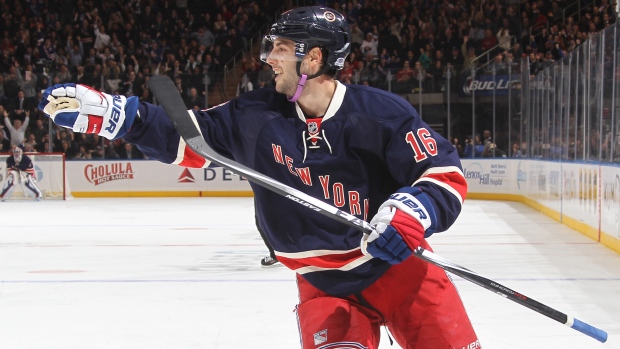Nov 12, 2014
Westhead: Why some NHL and NBA teams are wary of jersey sponsorships
Despite the word of a senior National Hockey League executive that jersey corporate sponsorships are coming to major North American sports within the next few years, some NHL and NBA team executives remain nervous that the move will widen the financial gap between large- and small-market teams. TSN Senior Correspondent Rick Westhead explains how such revenue from jersey ads might be divided among teams and players.

Despite the word of a senior National Hockey League executive that jersey corporate sponsorships are coming to major North American sports within the next few years, some NHL and NBA team executives remain nervous that the move will widen the financial gap between large- and small-market teams.
Last week, senior NHL official John Collins said at a sports technology conference that jersey sponsorships would be introduced to major North American sports leagues within a few years. The chance to raise so much incremental revenue may be too much to resist, even if it causes some backlash among fans who would prefer team jerseys remain unblemished.
Fans aren't the only ones who are anxious about the coming change.
Team officials in both the NHL and NBA have discussed their apprehensions over jersey sponsorships with their respective league officials, a source told TSN. The nervousness is borne out of uncertainty over how money raised through jersey sponsorships might be shared.
The rich may get richer, and leap further ahead of teams in smaller markets.
Take the NHL, for instance, where players receive 50 per cent of hockey-related revenue under terms of their labour agreement.
If there was no further revenue sharing and the New York Rangers were able to raise $12 million a year while the Winnipeg Jets could raise $2 million from jersey sponsorships, that would mean that after sharing half the proceeds with players, the Rangers would add another $6 million to their coffers, while the Jets would add $1 million.
"This is a problem for the smaller market teams," an NBA team executive told TSN. "They worry that the gulf between small and large market is going to widen."
One possibility being considered in both the NHL and NBA would see teams dedicate a percentage of their jersey sponsorship money into a combined pot that would then be shared equally by the league's teams.
For argument's sake, assume teams gave 30 per cent of what they received in jersey sponsorship to such a fund and that the average NHL team generated $5 million a year in such sponsorships.
In that scenario, if the Rangers raised $12 million and shared 50 per cent of that with players, the team would be left with $6 million. They then would contribute 30 per cent, or $1.8 million, to the pot, leaving them with $4.2 million. But then they'd get back one-thirtieth of whatever was in the pot.
If the average team generated $5 million in sponsorships and gave half to players, the amount in the pot for each team would be $750,000. So the Rangers would wind up with $4.95 million.
In the same scenario, if the Jets raised $2 million and gave half the remaining $1 million to players, the team would contribute $300,000 to the pot, leaving them with $700,000. But they, too, would get an equal share of the pot, giving them a total of $1.45 million.
"I think there's widespread support for a plan like that," an NHL source told TSN.
If recent developments are an indication, the NBA this year will test the waters on jersey sponsorships.
The Westchester Knicks, an affiliate of the New York Knicks in the NBA Development League, will wear uniforms this season featuring the name and emblem of the U.S. bank Chase. The bank's name will be emblazoned on the front of player jerseys, below the "Knicks" name and player number.
The Texas Legends, another NBA Development League franchise affiliated with the Dallas Mavericks, will have a partnership with the Mexican state of Chihuahua, the home state of retired NBA player and current Legends coach Eduardo Najera. The team's uniforms will feature the phrase "¡Ah Chihuahua!"
Brad Robins, a hockey marketer in Toronto whose clients include Joffrey Lupul, said the NHL should start out its efforts with jersey sponsorships by placing ads on goalie uniforms.
It would be a modest step towards further commercialization of jerseys that might not anger fans so much.
"Goalies tend to be featured on two-thirds of hockey replays," Robins said. "They are billboards."
In 2008, Robins was involved in an effort to coax the NHL Players Association and the league to introduce jersey sponsorships. At the time, the NHLPA leadership was in flux, Robins, said, but more recent stability might make it more realistic for the NHL to now pursue the effort.

